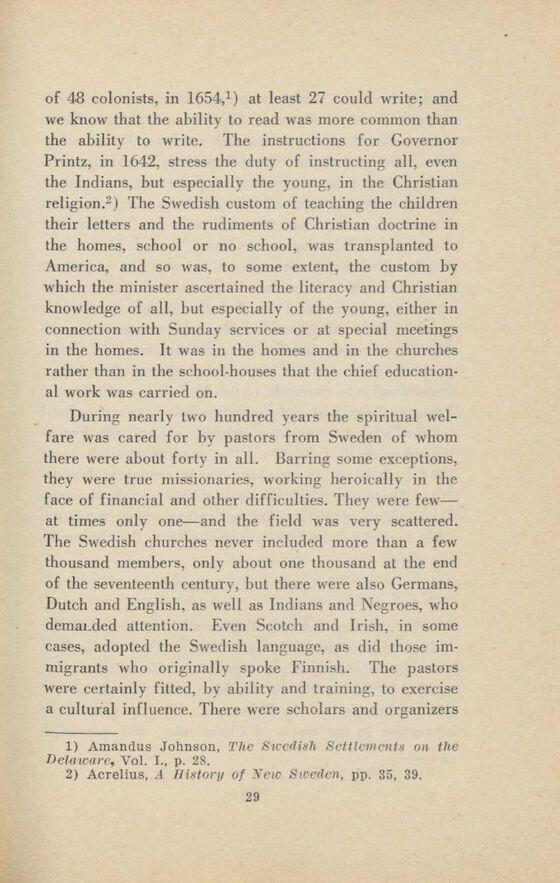
Full resolution (JPEG) - On this page / på denna sida - Sidor ...

<< prev. page << föreg. sida << >> nästa sida >> next page >>
Below is the raw OCR text
from the above scanned image.
Do you see an error? Proofread the page now!
Här nedan syns maskintolkade texten från faksimilbilden ovan.
Ser du något fel? Korrekturläs sidan nu!
This page has been proofread at least once.
(diff)
(history)
Denna sida har korrekturlästs minst en gång.
(skillnad)
(historik)
of 48 colonists, in 1654, [1] at least 27 could write; and
we know that the ability to read was more common than
the ability to write. The instructions for Governor
Printz, in 1642, stress the duty of instructing all, even
the Indians, but especially the young, in the Christian
religion. [2] The Swedish custom of teaching the children
their letters and the rudiments of Christian doctrine in
the homes, school or no school, was transplanted to
America, and so was, to some extent, the custom by
which the minister ascertained the literacy and Christian
knowledge of all, but especially of the young, either in
connection with Sunday services or at special meetings
in the homes. It was in the homes and in the churches
rather than in the school-houses that the chief
educational work was carried on.
During nearly two hundred years the spiritual
welfare was cared for by pastors from Sweden of whom
there were about forty in all. Barring some exceptions,
they were true missionaries, working heroically in the
face of financial and other difficulties. They were few—at
times only one—and the field was very scattered.
The Swedish churches never included more than a few
thousand members, only about one thousand at the end
of the seventeenth century, but there were also Germans,
Dutch and English, as well as Indians and Negroes, who
demanded attention. Even Scotch and Irish, in some
cases, adopted the Swedish language, as did those
immigrants who originally spoke Finnish. The pastors
were certainly fitted, by ability and training, to exercise
a cultural influence. There were scholars and organizers
<< prev. page << föreg. sida << >> nästa sida >> next page >>